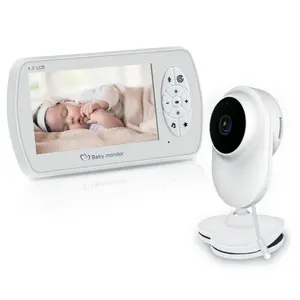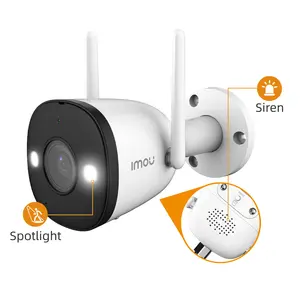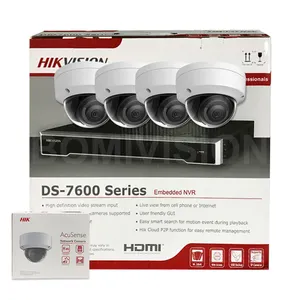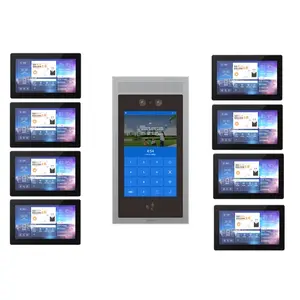Phổ biến trong ngành của bạn






Mô Đun Camera Hd 5mp 1080P 2K Dvp Mipi Csi AF FF Ov5645 Ov5640 Cmos Usb 500W
5,00 US$ - 12,00 US$
Đơn hàng tối thiểu: 3 Cái







Bán buôn không tiếp xúc loại nhôm-50-1800 phạm vi nhiệt độ 4-20mA cảm biến nhiệt độ hồng ngoại
60,00 US$ - 65,00 US$
Đơn hàng tối thiểu: 1 Cái







HQ M12 núi ô tô Fisheye CCTV F2.5 1.6mm FOV 200 Độ góc rộng ban Ống kính cho xe ghi máy ảnh
5,50 US$ - 6,00 US$
Đơn hàng tối thiểu: 200 Cái







Bộ điều khiển nhiệt độ hồng ngoại trực tuyến cảm biến nhiệt kế hồng ngoại không tiếp xúc
20,00 US$ - 25,00 US$
Đơn hàng tối thiểu: 5 Cái







Xách tay kích thước đường kính M18 * 68 mét thép không gỉ 4-20mA hồng ngoại cảm biến nhiệt độ
55,00 US$ - 65,00 US$
Đơn hàng tối thiểu: 5 Cái







2mp Không Thấm Nước Ip67 Nhỏ Wifi Không Dây Mini Usb Nội Soi Hồng Ngoại Rắn Ống Wifi Nội Soi Máy Ảnh Với 5M Cáp BS-GD33W
13,50 US$ - 19,30 US$
Đơn hàng tối thiểu: 1 Cái






IP68 chống nước thoát nước đường ống thoát nước rắn camera với tầm nhìn ban đêm hồng ngoại
Sẵn sàng vận chuyển
115,00 US$ - 135,00 US$
Đơn hàng tối thiểu: 2 Cái
Vận chuyển mỗi chiếc: 9,86 US$






5m sợi carbon cực 23 mét Đường kính ống rắn máy ảnh 4.3 inch màn hình cảm ứng intercom hồng ngoại cuộc sống Detector video cuộc sống Detector
397,30 US$ - 534,30 US$
Đơn hàng tối thiểu: 2 Cái






Máy Ảnh Nội Soi Micro USB 3.9Mm Nhỏ Nhất Thế Giới Máy Ảnh Ống Rắn Kiểm Tra Y Tế 720P
69,00 US$ - 99,00 US$
Đơn hàng tối thiểu: 10 Cái

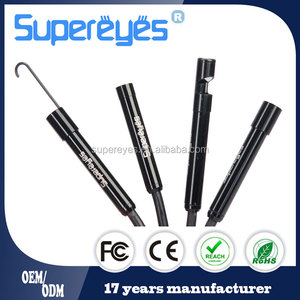
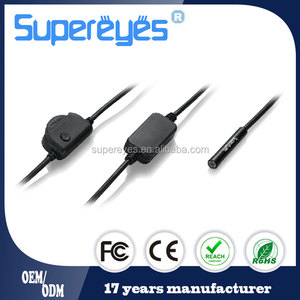
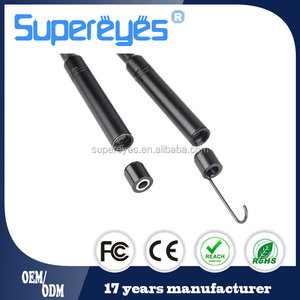
Supereyes N015 2M 6.5FT Không Thấm Nước 7 Mét 100X Linh Hoạt Usb Kỹ Thuật Số Rắn Ống Nội Soi Borescope Kiểm Tra Máy Ảnh Với LED
10,30 US$ - 14,00 US$
Đơn hàng tối thiểu: 2 Đơn vị






Inskam112B-1 8Mm 1M Rắn Ống LCD Hiển Thị Nội Soi Dưới Nước Kỹ Thuật Số Borescope Hồng Ngoại Máy Ảnh 1080P HD Nội Soi Máy Ảnh
Sẵn sàng vận chuyển
36,00 US$ - 42,30 US$
Đơn hàng tối thiểu: 1 Bộ
Vận chuyển mỗi chiếc: 32,12 US$






Camera Hồng Ngoại Borescope Công Nghiệp Với Cáp Làm Việc 6.0Mm Cáp Kiểm Tra 1.5M Camera Kiểm Tra Trực Quan NDT Khớp Nối 4 Chiều
1.500,00 US$
Đơn hàng tối thiểu: 2 Bộ
Các tìm kiếm liên quan:
máy ảnh rắn cho điện thoại di độngflir hồng ngoại giá máy ảnhcamera hồng ngoại flircamera flir ircamera ổn định tự độngmáy ảnh quét đường kỹ thuật sốcamera định vị hồng ngoạicamera quét đườngmáy ảnh rắn sony ccdcamera wifi hồng ngoạimáy ảnh rắn 10mmáy ảnh rắn 30mcamera wifi mini irnhà cung cấp máy ảnh lomomáy ảnh rắn với màn hình






Latest19.5mm Có Thể Thu Vào Rod Video Cuộc Sống Detector AM05 Cứu Hộ Âm Thanh Intercom Cuộc Sống Detector Camera 5M Với 7-Inch Màn Hình
Sẵn sàng vận chuyển
639,99 US$ - 666,66 US$
Đơn hàng tối thiểu: 1 Cái
Vận chuyển mỗi chiếc: 0,00 US$






Xách tay P40 công nghiệp nội soi không thấm nước cầm tay xe kiểm tra máy ảnh với màn hình LCD 1080P bán cứng nhắc Ống Cáp
Sẵn sàng vận chuyển
19,80 US$ - 23,50 US$
Đơn hàng tối thiểu: 5 Cái
Vận chuyển mỗi chiếc: 9,07 US$






300 độ 5.8mm hai chiều nóng bán cầm tay borescope kiểm tra máy ảnh
Sẵn sàng vận chuyển
615,00 US$ - 720,00 US$
Đơn hàng tối thiểu: 1 Hộp
Vận chuyển mỗi chiếc: 47,61 US$






5 Inch Màn Hình Màu Cầm Tay Kiểm Tra Công Nghiệp Camera Cho Hệ Thống Thoát Nước Đường Ống
46,00 US$ - 49,00 US$
Đơn hàng tối thiểu: 1 Cái






Anesok G51 Pro nội soi hồng ngoại máy ảnh 6 LED ánh sáng nhà sử dụng công nghiệp Ống kiểm tra rắn tự động chẩn đoán videocope máy ảnh
54,00 US$ - 63,50 US$
Đơn hàng tối thiểu: 2 Cái






Camera Mới 2022 Máy Ghi Âm Kỹ Thuật Số Thể Thao Tầm Nhìn Ban Đêm 1080P Bút Hành Động Camera Giám Sát Thân Máy Camera Mini CCTV
Sẵn sàng vận chuyển
26,00 US$ - 40,00 US$
Đơn hàng tối thiểu: 2 Bộ
Vận chuyển mỗi chiếc: 15,80 US$

Sản phẩm mới tốt nhất bán 40 Meter cáp ống kiểm tra máy ảnh cầm tay nội soi kiểm tra máy ảnh
Sẵn sàng vận chuyển
199,00 US$ - 520,00 US$
Đơn hàng tối thiểu: 1 Cái
Vận chuyển mỗi chiếc: 98,00 US$






5 Mét Cáp Linh Hoạt Công Suất Cao Đèn LED Sợi Quang Tầm Nhìn Ban Đêm IP67 Borescope Hồng Ngoại Cầm Tay Kiểm Tra Máy Ảnh
3.695,00 US$ - 4.619,00 US$
Đơn hàng tối thiểu: 2 Bộ






P40 công nghiệp nội soi không thấm nước cầm tay xe kiểm tra máy ảnh với màn hình LCD 1080P bán cứng nhắc Ống Cáp
Sẵn sàng vận chuyển
19,80 US$ - 23,50 US$
Đơn hàng tối thiểu: 5 Hộp
Vận chuyển mỗi chiếc: 10,55 US$






Giá Tốt Nhất Sử Dụng Y Tế Điều Chỉnh LED Không Thấm Nước Usb Borescope Nội Soi Kiểm Tra Rắn Máy Ảnh BS-GD30P
7,50 US$ - 8,40 US$
Đơn hàng tối thiểu: 10 Cái






Linh hoạt công nghiệp borescope hồng ngoại máy ảnh với không thấm nước IP67 phím điều khiển xoay 5 inch màn hình 6 mét ống kính thăm dò
1.300,00 US$
Đơn hàng tối thiểu: 2 Bộ

5 inch màn hình cầm tay công nghiệp hệ thống ống nước lỗ khoan ống cống kiểm tra máy ảnh
86,00 US$ - 89,00 US$
Đơn hàng tối thiểu: 2 Cái






Xách tay Túi máy ảnh 180 độ xoay thể thao kỹ thuật số hành động bút cam cơ thể màn hình CCTV mini máy ảnh
Sẵn sàng vận chuyển
23,00 US$ - 30,00 US$
Đơn hàng tối thiểu: 2 Bộ
Vận chuyển mỗi chiếc: 17,20 US$






VSNDT Máy Quay Video 360 Độ Của Nhà Máy, Máy Quay Kiểm Tra Video Thiết Kế Cầm Tay, Kính Ngắm Rắn Linh Hoạt 6Mm
Sẵn sàng vận chuyển
2.697,62 US$ - 2.820,24 US$
Đơn hàng tối thiểu: 1 Bộ
Vận chuyển mỗi chiếc: 75,17 US$






Nhà Máy 3.9Mm/8Mm 1 Meter Xe Tự Động Sửa Chữa Kỹ Thuật Số Borescope Máy Ảnh 5.5Mm IP67 Ống Chống Thấm Nước Ô Tô Nội Soi Máy Ảnh
Sẵn sàng vận chuyển
37,00 US$ - 46,50 US$
Đơn hàng tối thiểu: 2 Cái
Vận chuyển mỗi chiếc: 16,03 US$

Nhà máy tùy chỉnh 7 "giám sát kiểm tra hệ thống thoát nước borescope ống khói sâu cũng kiểm tra máy ảnh con rắn ống cống borescope
480,00 US$
Đơn hàng tối thiểu: 1 Bộ






Rất Nhỏ HD Mini Rắn Ống Video Camera 4 Mét Driver Usb Nội Soi Camera Cho Điện Thoại Di Động BS-GD30
Sẵn sàng vận chuyển
5,22 US$ - 8,25 US$
Đơn hàng tối thiểu: 10 Cái
Vận chuyển mỗi chiếc: 7,35 US$





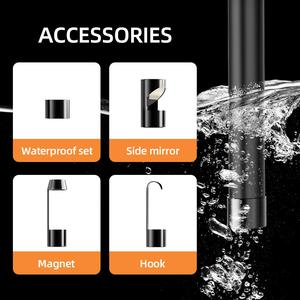
5 Inch Màn Hình Màu 10M Cáp Cầm Tay Công Nghiệp Hệ Thống Nước Lỗ Khoan Ống Hệ Thống Thoát Nước Kiểm Tra Máy Ảnh
86,00 US$ - 89,00 US$
Đơn hàng tối thiểu: 1 Cái






Máy Quay Mini Hành Động WIFI Chống Nước Giá Rẻ Từ Nhà Máy Máy Máy Quay Kỹ Thuật Số Camera Cctv Camera Thân Máy
Sẵn sàng vận chuyển
23,00 US$ - 30,00 US$
Đơn hàng tối thiểu: 2 Bộ
Vận chuyển mỗi chiếc: 17,20 US$






Kính Ngắm Mũi Khoan Kiểm Tra Di Động Có Đèn UV Cần Điều Khiển 360 Độ Có Khớp Nối Chống Nước Màn Hình IP67 5.7''
2.300,00 US$
Đơn hàng tối thiểu: 2 Bộ






Camera Ống USB Chống Nước 1/2/3/5M Trình Điều Khiển Cáp Máy Ảnh Nội Soi Usb Với Một Dòng OTG Tầm Nhìn Ban Đêm BS-GD33
4,00 US$ - 9,00 US$
Đơn hàng tối thiểu: 1 Cái





Wifi Borescope Kiểm Tra 2.0M HD Ống Kính Hồng Ngoại Rắn Không Dây Ống Kiểm Tra Nội Soi Máy Ảnh
Sẵn sàng vận chuyển
26,70 US$ - 43,50 US$
Đơn hàng tối thiểu: 2 Cái
Vận chuyển mỗi chiếc: 15,78 US$






5m sợi carbon cực 10.1inch màn hình cảm ứng 23 mét Đường kính ống rắn máy ảnh 4K WIFI intercom hồng ngoại cuộc sống Detector
Sẵn sàng vận chuyển
960,00 US$
Đơn hàng tối thiểu: 2 Bộ
Vận chuyển mỗi chiếc: 107,87 US$






2M IR Rắn Kiểm Tra An Ninh Camera Nhà Cung Cấp Lỗ Khoan Camera Kiểm Tra Cống Ống
Sẵn sàng vận chuyển
109,00 US$ - 116,00 US$
Đơn hàng tối thiểu: 1 Cái
Vận chuyển mỗi chiếc: 47,61 US$






Ống Soi Video Hồng Ngoại Cầm Tay Với Ống Kính Camera 6Mm Để Kiểm Tra An Ninh Cáp Thử Nghiệm 1.5M Ống Bện Vonfram
2.000,00 US$
Đơn hàng tối thiểu: 2 Bộ






Hti 2024 New Arrivals Wifi Xách Tay Kỹ Thuật Số Rắn Ống Công Nghiệp Máy Ảnh Nội Soi Với Kiểm Tra Máy Ảnh
45,00 US$ - 56,00 US$
Đơn hàng tối thiểu: 50 Cái






5.5 Mét Nội Soi Không Dây WiFi Borescope Kiểm Tra Camera 2.0MP HD Bán Cứng Rắn Camera Để Kiểm Tra Động Cơ Động Cơ Hệ Thống Thoát Nước
21,99 US$ - 31,99 US$
Đơn hàng tối thiểu: 100 Cái



Hồng ngoại dài khoảng cách phát hiện nội soi, di động kiểm tra máy ảnh cuộc sống Detector, an ninh tìm kiếm nội soi
695,00 US$ - 720,00 US$
Đơn hàng tối thiểu: 2 Gói
Các danh mục hàng đầu
Giới thiệu về camera rắn hồng ngoại
Alibaba.com cung cấp các sản phẩm 59 camera rắn hồng ngoại. Có rất nhiều camera rắn hồng ngoại lựa chọn dành cho bạn, chẳng hạn như không thấm nước, không thấm nước/weatherproof, và tầm nhìn ban đêm. Bạn cũng có thể chọn từ odm, biểu tượng tùy chỉnh, và phần mềm reengineering camera rắn hồng ngoại. Cũng như từ ngoài trời, trong nhà camera rắn hồng ngoại.Và bất kể camera rắn hồng ngoại là sd thẻ, bộ nhớ thẻ, hay đầy đủ hd.

